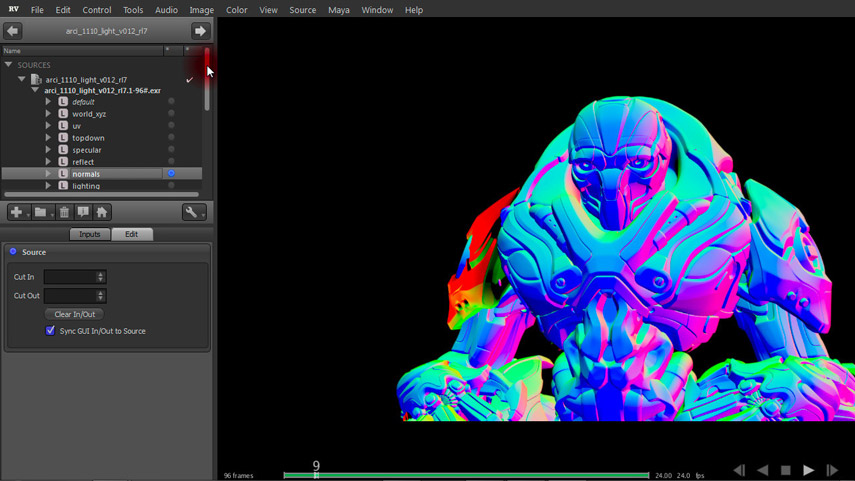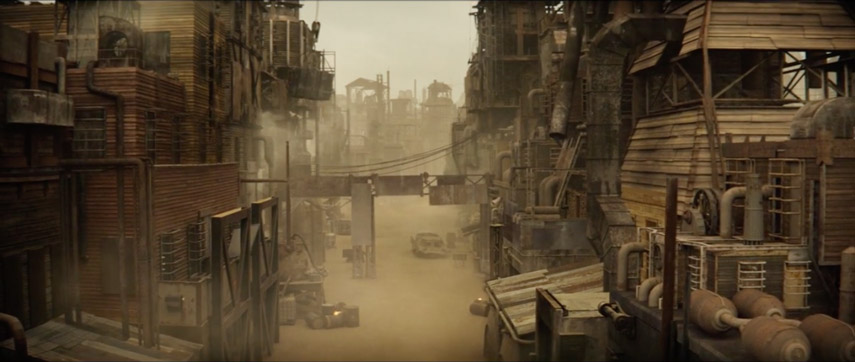Rob Nederhorst
 VFX supervisor, Rob Nederhorst is an innovative creator and a highly sought after collaborator. After working on feature films such as Stealth, The Day after Tomorrow, Daredevil, and Star Trek: Nemesis at Digital Domain, Nederhorst went on to Sway Studios as the Visual Effects Supervisor where he was nominated for a Best Compositing in a Commercial award by the Visual Effects Society for his work on a set of Djarum Mezzo commercials for Joseph Kosinski. Nederhorst then helped open the doors at Speedshape LA, a sister office for the Detroit-based automotive visualization company and set new standards on the award-winning, SAAB spec: Blackbird. Nederhorst brought new rendering technology to ReelFX and later worked with Svengali FX on various feature film projects including Iron Man 2 and After Earth. Activision recruited Nederhorst to help supervise the production of Guitar Hero Live, an ambitious visual effects project with over 360 minutes of finished visual effects. After working on projects for clients such as Sunny D, Toyota, Schiff, Fidelity, Ferrari, Paul Mitchell and a theatrical spot for Coke/AMC, Nederhorst was nominated for a VES Award for Best Created Environment. To find out more, visit: Rob Nederhorst at www.throb.net
VFX supervisor, Rob Nederhorst is an innovative creator and a highly sought after collaborator. After working on feature films such as Stealth, The Day after Tomorrow, Daredevil, and Star Trek: Nemesis at Digital Domain, Nederhorst went on to Sway Studios as the Visual Effects Supervisor where he was nominated for a Best Compositing in a Commercial award by the Visual Effects Society for his work on a set of Djarum Mezzo commercials for Joseph Kosinski. Nederhorst then helped open the doors at Speedshape LA, a sister office for the Detroit-based automotive visualization company and set new standards on the award-winning, SAAB spec: Blackbird. Nederhorst brought new rendering technology to ReelFX and later worked with Svengali FX on various feature film projects including Iron Man 2 and After Earth. Activision recruited Nederhorst to help supervise the production of Guitar Hero Live, an ambitious visual effects project with over 360 minutes of finished visual effects. After working on projects for clients such as Sunny D, Toyota, Schiff, Fidelity, Ferrari, Paul Mitchell and a theatrical spot for Coke/AMC, Nederhorst was nominated for a VES Award for Best Created Environment. To find out more, visit: Rob Nederhorst at www.throb.net
GW: Rob, thank you for taking the time to collaborate even amid your very-busy current project!
RN: Absolutely! My current in-production project excites me because I am a fan of the franchise and the genre. The photography looks incredible and it will be an honor and a pleasure to lend any creative mettle towards this project.
GW: Terminator 2 was a big inspiration for you. Can you share how you forged your career from that moment on? i.e., did you pinpoint a certain major? Did you intern somewhere? Apply to a specific school? etc.
RN: Well, honestly, I was terrible at school. I did my own thing many times and sometimes that worked, and sometimes it didn’t. I had conviction on my motivations and went forth with voracious intensity which generally results in progress being made. That’s life in general really. What I got out of school was social experiences and meeting new people. It was wonderful for that. Circling all the way back to T2, I remember seeing that and saying, “that’s what I want to do.” It was so cool to see this metal thing move and live in that environment. My mind was blown!

GW: How different are the day-to-day experiences for a visual effects artist as opposed to a visual effects supervisor?
RN: Oh boy, there can be books written about this subject so I will do my best to sum it up quickly. An artist is responsible for their small part on the project. They sometimes have no idea of the big picture, and as long as they are given clear direction, then they can execute well. Supervisors need to manage the entire project from start to finish. This means financial, temporal, and procedural issues need to be understood and resolved. Many times, there are a lot of things going on in the background that artists are not aware of but that supervisors are wrestling with. It’s a fascinating job to be honest with you. The biggest challenge is dealing with people and managing them. It’s easily the hardest thing to do. I hope that my management style is effective and people are pleased. I do the best I can to do right by my team.

GW: You are known for your innovation in the workplace. What does it take to reengineer a working pipeline to create even higher quality visuals with less artistic frustration?
RN: Whew, once again books can be written. The key here is knowing what your end product needs to be and who your customers are. Hint: your customers are the artists working with you. If the pipeline saves 10 minutes per day per artist, and you have 30 artists working there, you’ve saved 5 hours of time per day. That’s nearly 1 day of work if you go with an 8-hour day. This means the pipeline has added nearly one more person to the team. The pipeline should be built to make the entire crew operate at maximum capacity as often as possible. If someone in management sees that people spin wheels on specific tasks they should instantly do a deep dive and understand what the problem is and work to rectify. That’s what I have tried to do. My success has varied greatly in this regard of course but that’s the intention.

GW: Can you tell us about your experience on Guitar Hero Live and the ambitiousness of that visual effects project?
RN: GH Live was a rad project. Seeing hundreds of people going bonkers for a fake band lip syncing to real songs for 8 hours a day was honestly a ton of fun. Framestore was the VFX vendor on the show and they did an amazing job honestly. The biggest challenge was to communicate the requirements of what a large VFX show were to a company that has traditionally not specialized in that. Luckily for me, the people at Activision are awesome and listened well and we worked out a scenario that allowed for principal photography to move as fast as possible and save money and time on the back end of the project. Ultimately Framestore does what they do best: deliver amazing visual effects work. Many kudos to that team. They absolutely nailed it.

GW: How different are the challenges when working in film as opposed to video games? And how do you tackle those challenges?
RN: Well my answer will be tempered because I have not worked in real time video game creation. GH Live was live action and done with many traditional visual effects techniques. I would say the difference is frame rate requirements. Realtime requires 60fps which means there are scores of amazing developers working on optimizing milliseconds for shaders, textures, and so on. I watched this super talented guy work on an eyeball shader for a few months. Getting that to look great with as few milliseconds delay was the challenge. In the end, he did it. It looked awesome and performed well. Some serious art meeting technical ability there.

GW: Out of all the IP’s you’ve worked on, is there one or two that will always stand out above the rest? What about that one (or two) project(s) was most influential to you and why?
RN: Honestly the project I am working on now will stand out without question as the best-looking movie I have ever worked on. Dan Laustsen really shot this movie very well. The color and composition is off the chain. This is also the first studio side supervising job I have done so it will stand out forever for me and my career.
GW: Lastly, for anyone who wants to work in VFX or in entertainment in general, are there key pieces of advice often overlooked that would help prepare new creators?
RN: As with anything you want to master, you need to go super deep. When I started, I ate, slept, dreamt VFX and CGI. I involved myself with as much of the process as possible. I went far enough to learn to code to help build the application. I was fortunate enough to have incredible people to learn from, so I would also say to find someone (or multiple people) to learn from that you can go to in times of confusion and guidance. I would also say to try a few things in our little VFX world and see what you like. There are sub-niches in our already niche industry. You can master one or two of them and become a commodity. When you get to that valuable place, you’ll never run out of work. Once you’re at that spot, branch out a little bit and get good at another thing (or two!) and add to your repertoire. Doing this allows you to be employed or useful for a larger variety of things, which means you increase your value. Last but not least: do your best to be personable. Our industry is filled with so many amazing people. Take time to meet them and make your network. You’ll reap not only professional but personal rewards.
GW: Thank you, Rob! Your insights, inspiration, and caring demeanor are so much appreciated!
RN: Cheers!!
| Check out Archetype FVX Breakdown with Rob Nederhorst |





